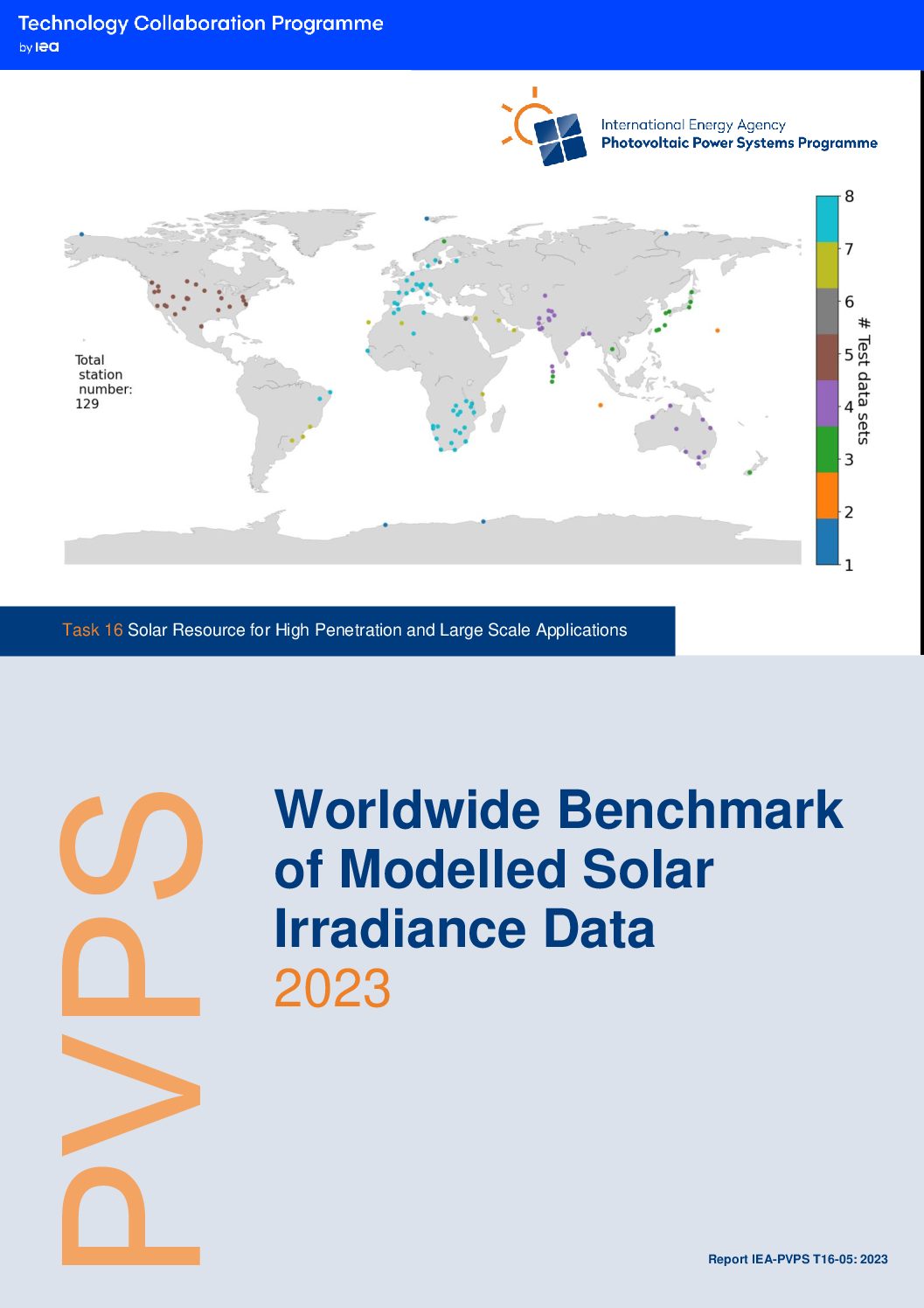Modelled irradiance data based on satellite products and numerical weather prediction models are frequently used in solar energy applications and atmospheric sciences. Many such sources of data are now offered by various different institutional or commercial providers, but it is currently difficult for users to independently identify the best provider for their specific application or location. This work presents a benchmark of model-derived direct normal irradiance (DNI) as well as global horizontal irradiance (GHI) data at the sites of 129 globally distributed ground-based radiation measurement stations. DNI and GHI estimates from ten different solar radiation datasets, either public-domain or commercial, are compared against high-quality ground-based irradiance observations from these stations. The comparison of the modelled to observed data is conducted at hourly temporal resolution. The performance of the modelled data is analysed with respect to different regions and climate zones. This study is intended to help the solar industry make better informed decisions about solar resource assessments.
The reference observational database consists of ground measurements and is collected from 25 different providers or radiometric networks. Most stations provide measurements of DNI, GHI, and diffuse horizontal irradiance (DIF) with thermopile radiometers and a solar tracker. A few stations provide measurements of only two independent components, either with two thermopile radiometers or a single rotating shadowband irradiometer (RSI). The used reference database is at high temporal resolution (1 min) from 129 stations during 2015–2020. Only quality-assured data have been considered in this benchmark through a comprehensive set of best practices and newly implemented quality-control procedures. These include automatic as well as manual data quality-control tests carried out by a team of experts for all stations, resulting in flags describing the data quality for each time stamp. The 129 stations are spread out worldwide, including 31 stations in Africa, 31 in Asia, 27 in North America, 20 in Europe, 13 in Australia, 5 in South America, and 2 in Antarctica. The bulk of the quality-controlled data from the 129 stations has been published within this benchmark including the results of the quality control.
The modelled data sets, which are tested by comparing them to ground-based reference measurements in this benchmark, are called test data sets. They stem from ten different models from nine different providers. Not all models provide estimates for all stations.
Amongst other statistical performance parameters, the mean bias deviation, root mean square deviation, and standard deviation are calculated for each year and for all stations. Based on the results of the statistical analysis, the most appropriate data set might depend on site, climate, or continent of interest. The model errors and the differences between the various modelled data sets are much higher for DNI than for GHI, according to expectations.
Based on this work, analysts can make an informed decision about which surface radiation model(s) and data provider(s) are most suited for their location and application.
The main authors have identified the following 3 Key Takeaways from the report:
- The most appropriate modelled data set depends on site and climate or continent of interest.
- Modelled errors and deviations between data sets are generally much higher for DNI than for GHI data.
- Without a stringent quality control procedure, no real validation can be done, with the risk of obtaining invalid results
